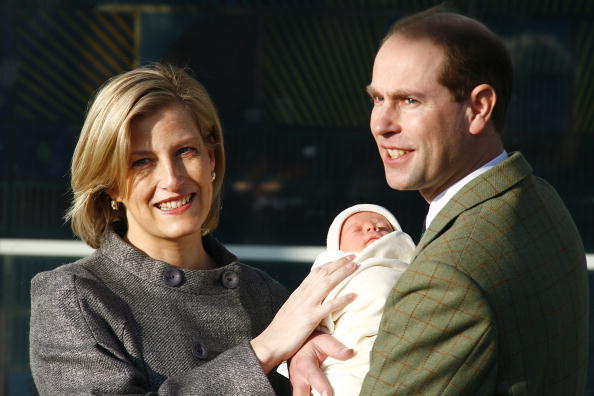Gen Z’s Trend Obsession: Brand Loyalty is Dead
Introduction: The Rise of Trend Loyalty
The retail landscape is shifting, and the ground beneath marketers’ feet is trembling. The age of unquestioning brand devotion, where consumers pledged allegiance to a particular logo for life, appears to be fading into history. The latest “Customer Loyalty Index 2025” from SAP Emarsys, a comprehensive survey encompassing over 10,000 consumers across five countries, paints a stark picture: a new form of allegiance is taking root – “trend loyalty.” This article will delve into the intricacies of this phenomenon, exploring why Gen Z, in particular, is driving this change and what it means for brands hoping to stay relevant in an increasingly volatile market. Forget decades-long brand reverence; Gen Z navigates a world dictated by fleeting viral moments and the pressure to stay ahead of the curve. Are your strategies aligned?
Understanding Trend Loyalty: A New Paradigm
Trend loyalty, as defined by the Emarsys report, isn’t about sticking with a brand through thick and thin. Instead, it’s about gravitating towards whatever is currently popular, fashionable, or culturally relevant, regardless of the brand behind it. This isn’t about a lack of brand awareness; it’s about a conscious choice to prioritize fitting in, expressing oneself, and showcasing an understanding of current cultural currents. Think of the fleeting popularity of specific fashion aesthetics on TikTok, the surge in demand for a particular food item after it goes viral, or the sudden adoption of a new slang term. Gen Z is quick to embrace these trends, even if it means abandoning their previous brand allegiances. They are driven by social validation and the desire to be perceived as “in the know.”
The Gen Z Factor: Digital Natives and the Speed of Culture
While trend loyalty affects consumers across age groups to some degree, Gen Z, born between the late 1990s and early 2010s, is the driving force behind this shift. As digital natives, they’ve grown up immersed in a world of constant connectivity, where information spreads at lightning speed and trends emerge and disappear in the blink of an eye. Their lives are heavily influenced by social media platforms like TikTok, Instagram, and YouTube, where algorithms curate personalized feeds designed to capture their attention and keep them engaged. This constant exposure to new trends, coupled with the pressure to maintain a curated online presence, fosters a culture of rapid adoption and disposal. The fleeting nature of internet fame makes lasting brand relationships seem almost anachronistic.
The Influence of Social Media: A Breeding Ground for Trends
Social media is the incubator for trend loyalty. Influencers and creators showcase the latest must-have products, viral challenges, and cultural moments, driving demand and shaping consumer behavior. For Gen Z, social media isn’t just a platform for entertainment; it’s a source of information, a social barometer, and a crucial element of their identity. Brands that fail to leverage the power of social media and connect with Gen Z in authentic and engaging ways risk becoming irrelevant. However, simply throwing money at influencer marketing isn’t enough. Authenticity, transparency, and a genuine understanding of Gen Z’s values are crucial for building meaningful connections.
The Role of Authenticity and Values (Or Lack Thereof)
Ironically, while Gen Z is often perceived as being driven by superficial trends, they also place a high value on authenticity and social responsibility. However, this value doesn’t always translate into brand loyalty. They’re quick to call out brands that engage in inauthentic marketing tactics or fail to align with their values. A brand’s perceived “goodness” can certainly influence a purchase, but it’s often weighed against the current trend. If a sustainable brand isn’t currently ‘in,’ Gen Z may opt for the more trendy but less ethically sound option. Therefore, brands must demonstrate a genuine commitment to their values and communicate them in a way that resonates with Gen Z’s skepticism.
The Implications for Brands: Adapting to the New Reality
The rise of trend loyalty presents a significant challenge for brands. Traditional marketing strategies, focused on building long-term brand equity and fostering customer loyalty programs, may no longer be as effective. Brands need to adapt their strategies to embrace the fluidity of trends and cater to Gen Z’s desire for novelty and social validation. This may involve launching limited-edition products, collaborating with influencers on trending campaigns, and actively participating in online conversations. Agility is key. Brands must be able to identify and capitalize on emerging trends quickly before they fade away.
Strategies for Success: Riding the Trend Wave
So, how can brands successfully navigate the era of trend loyalty? Here are a few key strategies:
* **Embrace Agility:** Be prepared to pivot your marketing efforts quickly to capitalize on emerging trends.
* **Collaborate with Influencers:** Partner with authentic influencers who resonate with your target audience.
* **Create Engaging Content:** Develop content that is entertaining, informative, and shareable.
* **Foster Community:** Build a strong online community where Gen Z can connect with your brand and each other.
* **Be Authentic:** Stay true to your brand values and communicate them in a genuine way.
* **Embrace Co-Creation:** Involve Gen Z in the development of your products and marketing campaigns.
* **Focus on Experiences:** Create memorable experiences that resonate with Gen Z’s desire for novelty and adventure.
Beyond the Hype: The Long-Term Implications
While trend loyalty may seem like a superficial and fleeting phenomenon, it has significant long-term implications for the retail industry. It forces brands to become more agile, creative, and responsive to the needs of their customers. It also challenges the traditional notions of brand equity and customer loyalty. Brands that can successfully adapt to this new reality will be well-positioned to thrive in the years to come. Those that cling to outdated strategies will risk being left behind. It also raises questions about the environmental impact of constant consumption driven by fleeting trends, which is a concern that brands must address.
Conclusion: Navigating the Future of Brand Engagement
The shift from brand loyalty to trend loyalty is a complex and multifaceted phenomenon. It’s driven by a combination of factors, including the rise of social media, the increasing speed of culture, and the unique values of Gen Z. While it presents challenges for brands, it also offers opportunities for innovation and growth. By embracing agility, authenticity, and a deep understanding of their target audience, brands can navigate the era of trend loyalty and build meaningful connections with the consumers of tomorrow. The key is to understand that Gen Z is not *anti*-brand; they’re *pro*-relevance, and relevance is defined by the trends they follow.
Frequently Asked Questions
- What is “trend loyalty” and how does it differ from traditional brand loyalty?
- Trend loyalty is the tendency of consumers, especially Gen Z, to favor products, services, or experiences that are currently popular or fashionable, regardless of the brand behind them. Traditional brand loyalty, on the other hand, involves consistently choosing a particular brand over others, often due to positive past experiences, perceived quality, or emotional connection.
- Why is Gen Z more likely to exhibit trend loyalty?
- Gen Z grew up surrounded by digital technology and social media, where trends spread rapidly. They’re heavily influenced by influencers, online communities, and the desire to maintain a curated online presence, all of which contribute to their focus on staying current with the latest trends.
- How can brands adapt to the rise of trend loyalty?
- Brands can adapt by becoming more agile, collaborating with influencers, creating engaging social media content, fostering online communities, and staying true to their brand values. They should also be prepared to pivot their marketing efforts quickly to capitalize on emerging trends and embrace co-creation with their target audience.






